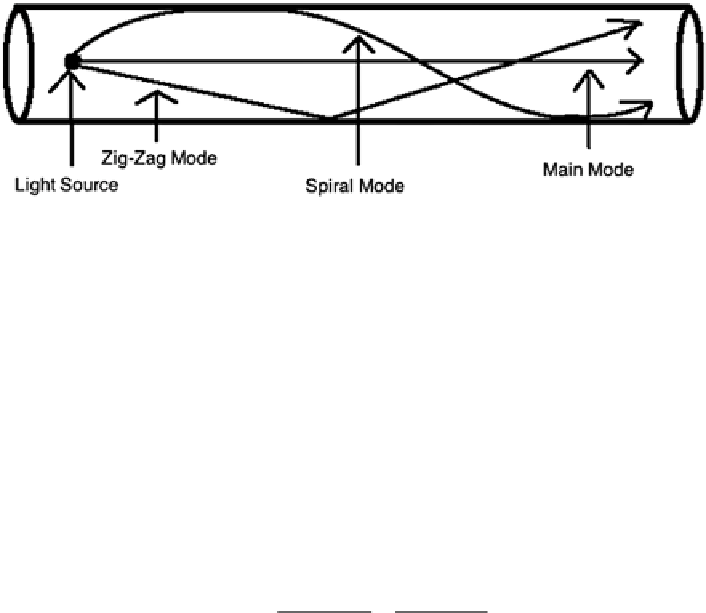Environmental Engineering Reference
In-Depth Information
for shorter length applications. Single mode fibers allow signals to travel in one axis
only. However, in multi-mode fiber, signals can travel in different modes such as
spiral and zigzag albeit at a slower traveling speed than axial mode. Figure
14.1
demonstrates two different modes.
Fig. 14.1
Modes that light can travel along a glass fiber. Courtesy SPE 163688
Operating Principle
The physics behind the DTS and DAS (DSTS or DTSS) sensing rests on the way
light is scattered. There are three principal mechanisms involved in the scattering of
light. They are Raleigh, Raman, and Brillouin, named after the investigators who
documented these observations.
In order for the system to discern between the backscattered signals, it has to
wait to receive the sent signal back before sending another signal. Thus the repeti-
tion frequency is a function of fiber length. Equation (
14.1
) illustrates the relation-
ship between the fiber length and the signal frequency.
V
Vn
l
/
fiber
light
index
f
=
=
(14.1)
max
l
2
´
(
)
fiber
fiber up down
+
Assuming that the refractive index (
n
) is 1.5 and the speed of light is 3 × 10
8
m/s then
for a 10 km fiber, the maximum pulse frequency rate would be 10 kHz and the maxi-
mum frequency response would be 5 kHz. Thus if a pulse is generated at each 10 ns
(10
−8
s), the spatial resolution created by the laser pulse would be 1 m. Thus, there
is a trade-off between the spatial resolution and the maximum length of fiber.
Rayleigh Scattering
Rayleigh scattering occurs when the wavelength of a light beam is close to the size
of the objects through which it passes. For this reason white sun light is scattered
when entering the Earth's atmosphere and encounters molecules of oxygen and
nitrogen. The blue light is the one most easily scattered and the reason why we see
a blue sky rather than a red one.


Search WWH ::

Custom Search